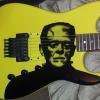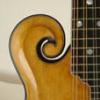Leaderboard
Popular Content
Showing content with the highest reputation on 09/05/2019 in all areas
-
2 points
-
If you don't want your time based effects (like delays) between your mesa preamp and poweramp, you're good. If it's just the messy cables, see the other thread "4cm too messy" for suggestions on taming the snakes.2 points
-
Hi, I'm facing a blocking issue since I've upgraded my ipad air to ios 12.4... Using GarageBand too ,Mmobile Pod crashes every time I want to record ... The LIne6 support does not answer to my ticket for more than one week ... Anyone facing same issue as me ? thanks1 point
-
1 point
-
There is nothing "as usual" about updating to 2.8 (or 2.81) from the earlier versions. There are comprehensive instructions on how to do it.... did you read those? Did the error state "Boot Failure. Entered Update Mode!"? If so... that was also part of the install process and is clearly laid out in the instructions. If that looks familiar, then this is how you recover.... Turn off the Helix Download the latest HX Edit (2.81) and install it When you get to the options section of the install... LEAVE THEM ALL CHECKED. That is safer than unchecking something you need in error. DO NOT Open HX Edit after it installs... if it is open it will interfere with the updater. Start the Helix with FS6 and FS12 pressed (this will force the Helix into update mode) Now start the LINE 6 Updater and it should guide you through a successful update. TIP: Pay attention to the messages on the computer screen, not on the Helix itself!1 point
-
Do you have the ASIO4ALL.sys driver installed on your PC ? If you do then get rid of it. That's typically the problem.1 point
-
Snapshots allow you to change the state (on/off) of amp and FX blocks within a preset and also allow you to change the values of up to 64 parameters of the defined blocks. The specific blocks and the routing/signal flow of the preset are not changeable by snapshots. You define a preset based on the DSP and signal routing limitations of Helix and then define different states and settings of the given configuration using snapshots. Yes - there is still a short audio gap when switching presets.1 point
-
There are snapshots. You can configure your presets per song and change the snapshot, there's no gap. If you change the preset, there's a little gap. Edit : (Silverhead was faster ;))1 point
-
Snapshots. You can have up to 8 snapshots in the same preset and switch among them with no audio gap. It's well described in the manual.1 point
-
Velcro strips are your friend. I have um and use um all the time. Being neater about your layout is good, but obsessive (anything) OCD or just weirdness stops you from spanking the plank. BTW- I have OCD and speak from experience here- and FYI there's no tuner in the editor so don't even look for one! ; )1 point
-
Sorry, I missed this question earlier. One great option with standard 4cm is the possibility to toggle between your amps pre-amp and different pre-amps in the Helix. You have completely eliminated this option. You have locked yourself into 8 effects before the amp, and 6 effects in the effects loop (2 blocks are required for send/return on the loops path). With standard 4cm you are not tied to a specific number in either location.... you just have a 32 block overall limit. You have tied yourself to 1 processor for all your guitar effects. This may result in DSP limits.1 point
-
A wireless affects the input. People should have already figured that into their patches. As to how an IEM sounds - if someone has already tweaked their patches and knows what they are to sound like, then there is a problem with the IEM that someone selected. Believe me, I have played with companies that have provided horrible earpieces and companies who have provide nice earpieces. There is a difference. But, it also goes hand in hand with the rest of the sound system as well. But this still begs the question - how does a bad IEM sound involve a wireless unit. They are two totally separate pieces. One has nothing to do with the other. It is not like someone is going to switch to a guitar cord and sound any better through the same IEM. However, with your answer to my question, I have enough information that I will give my 2 cents: I have not used an amp since I started using my Pod. I go direct, always. For hearing myself at live events, I use whatever is provided. Sometimes it is a floor monitor, sometimes it is an IEM. And, yes, sometimes it is even a guitar amp. Unless provided for me, I do not use wireless. And, that is not my preference. I would much rather be cord-free - especially when I am part of the show instead of hired as some background player. It's just that I stopped using personal wireless units 30 years ago because there was always a conflict with the signals with some other member of the show, and the technology wasn't available for private connections or frequency switching. So, when it came time to put on a show, I always made sure that they were company owned devices instead of my own personal financial blunder - they could design/buy the units based on how many of what was in a show. Conflict free. So, that means, I have just about all of the experiences at various scenarios needed to answer questions - The future is ampless. Be prepared to go direct to the mixer. Of course, this doesn't mean that you can't use your own personal amp/monitor on stage to hear yourself. But it does mean, figure your patches for going direct. And try to go ampless as much as possible. Beyond that - if you "need" to have a physical amp pushing air and making your ears ring every night, ROCK ON \\m//. But be aware that some stages are so small that you don't have room for the amp. Some venues are so small that your amp over powers the pa. Some stages are so big that your amp isn't going to you any good unless you are standing right in front of it instead of running across the stage entertaining the crowd the way you are paid to do. So, really, why not just learn to use monitors (floor or ear) anyhow. If your modeling device is good, and you design proper patches, and your monitoring system is good, there should be no difference between what you hear than if you used a mic'd guitar amp - other than your guitar amp is behind you and the monitor is in front of you.1 point
-
SUCCESS!! So I was having the same frustrating SPINNING WHEEL issue while using Logic Pro as many others... but I made one change that seems to have fixed the problem! I just turned off my internet connection (WiFi) then tried opening the plugin in Logic, but this time instead of it causing the constant spinning wheel, it prompted me for my account login info (...because of no internet connection). But this time where I had previously been connecting over my home Wi-Fi... I instead connected to my iPhone via PERSONAL HOTSPOT... typed in my password and it loaded right up! And after that first successful attempt I now seem to be able to use my home Wi-Fi without any issues and everything seems to be working as it should! DANG....FINALLY!!!1 point
-
Hi Guys. Just done this for my benefit and thought would share. Easy print! Cheers Spider V.docx1 point
-
Correct on all counts. Unless you use a REALLY crappy interface, (or you'r a certified tone-sniffer) pre-amp coloration is negligible. A WAH in front of your interface works fine. Again, quality matters.1 point
-
1 point
-
Getting a good distortion tone starts with gain staging. It may be hard to get a range of different distortion tones from Clean, Blues, Crunch, and Metal from one amp or pedal. But combining them together in stages using different blocks, models and tone adjustments can give you a lot of flexibility on the amount and color of distortion and sustain. One thing that's important is to use the least amount of distortion (effects, etc.) you need for the song. This makes things simpler, produces the best tone, and gives you a place to go in the next song. Music needs space. Start with your desired clean sound, using the neck pickup on your guitar with the guitar volume and tone all the way up. This is your inital, set point amp tone and something you'll need to be able to go back to. Once this tone is right you'll probably notice that it's too bright for the bridge pickup, creating too much edge, or an "ice pick" tone that unpleasant after listening for a while. Don't change the amp to fix this since that would break your neck pickup tone. Instead roll back the tone control on your guitar to warm up the bridge pickup a little. A lot of people never touch the tone controls on the guitar, or only use them for slide. But the bridge pickup tone control is actually pretty useful. Next add a gain stage for warm, just on the edge of breakup, Blues distortion tones. As distortion increases, base has to be cut to prevent a muddy, indistinct sound that competes with the bass player, and treble needs to be cut to avoid fizz, buzz and ice pick. But since a Blues tone isn't that much distortion, you can often get this from the Drive control on the amp. Assign a footswitch to the Drive control and assign a controller to set the min (clean) and max (blues) Drive distortion levels. In this case, the drive is increased to add some amp distortion without changing the tone. Be careful to minimize the amount of distortion or it will get muddy and bright quick. For a Cruch sound, you'll need a bit more distortion, which will require some base and treble cut. I like to use the Studio Tube Pre for this as it adds a nice tone of its own, and has the Drive control for increased distortion and the low cut and high cut you need to adjust the tone. Use the Sensitivity control to adjust the amount of distortion that can be produced by the Studio Tube Pre. Set Sensitivity to Mic for greater distortion, Line for cleaner tones (the Drive can be set higher without adding any distortion). I use Mic for this application as I want more distortion. Other options for Crunch: Valve Driver, Minotar, or ProCo Rat. I know the ProCo Rat is intended for high distortion levels, but it actually cleans up very well by turning the drive down and adjusting the filter for the desired high end. I think this block increase bass cut with increased drive, which is just what you want. For Metal or more agressive tones, I like Compulsive Drive (Fulton OCD). Screamer works well too. Use the tone control to adjust the high end. If it gets too muddy, try adding a Low and High cut EQ filter in front of the distortion, and link the low cut to the distortion footswitch to cut closer to 80 Hz when the distortion is off, 160 Hz when it's on. Now you have four distortion levels, all off for Clean, and each block on/off for Blues, Crunch, Metal. Now you can start combining stages to get even more tones. For example, I like to combine Blues and Crunch together for a more aggressive blues solo.1 point
-
I have measured 5msec of latency when you use the footswitches in ABCD mode. You will notice much less latency if you can use the footswitches in 1-8 mode instead. That is, only change patches/banks between songs. Within a song you have 8 footswitches available to provide the various sounds you need.1 point
-
There is going to be a slight latency (a few ms) when switching presets. This is unavoidable - the device needs to reload data (the new preset) into it's working memory and this process takes at least a small amount of time. In most cases it's not a problem but in some situations you may need to adjust your playing so that the latency is not noticeable. For instance, create a slight pause in your playing while switching presets.1 point
This leaderboard is set to Indiana - Indianapolis/GMT-04:00






